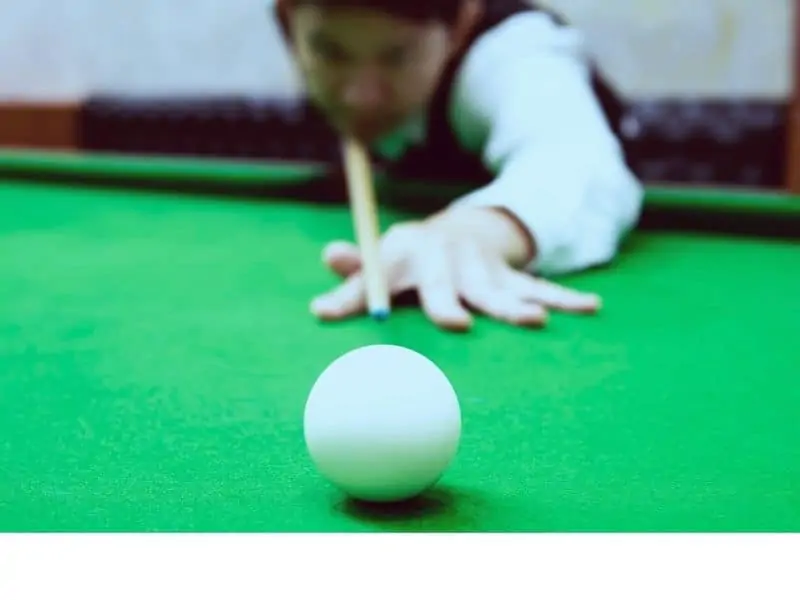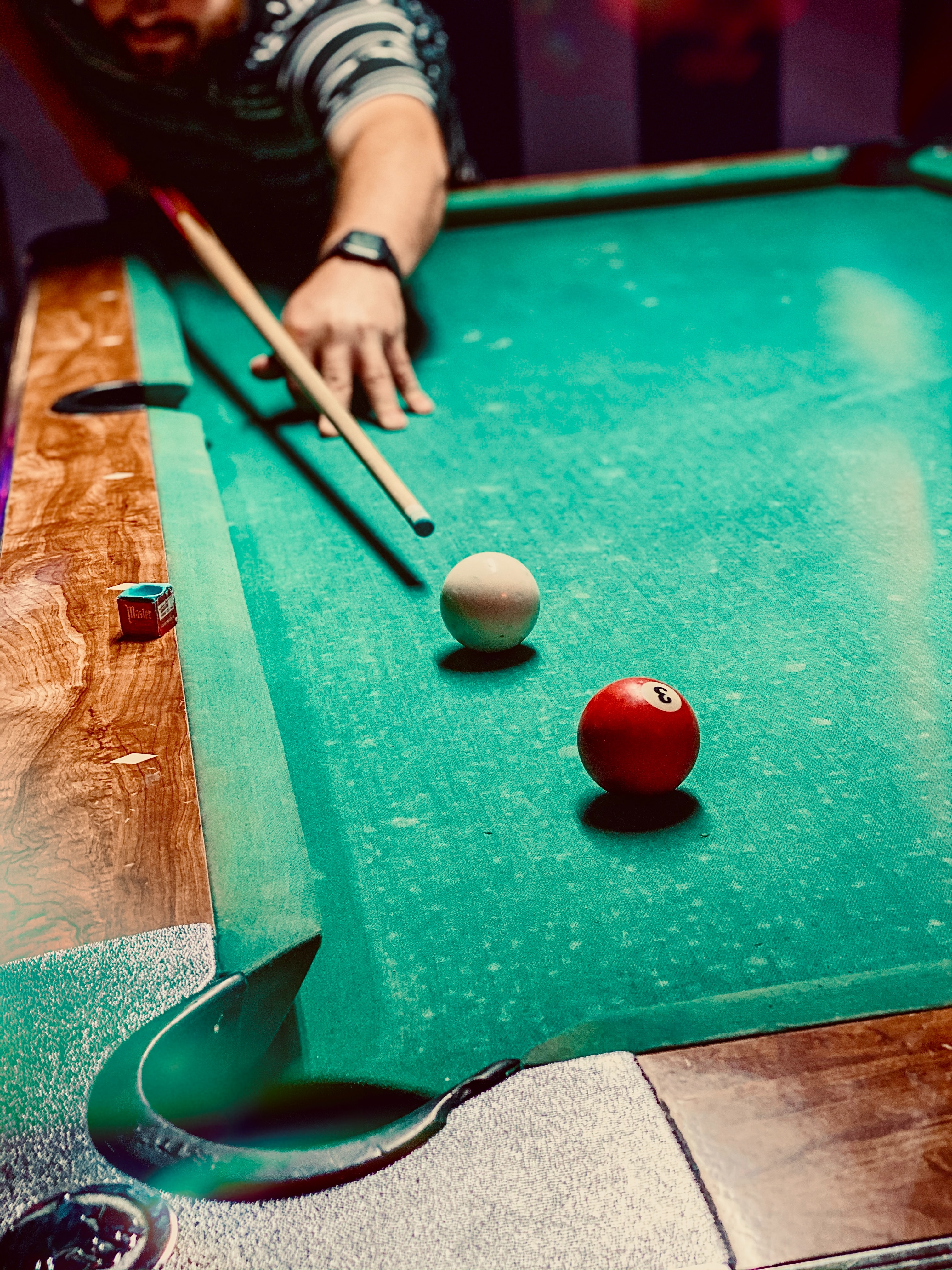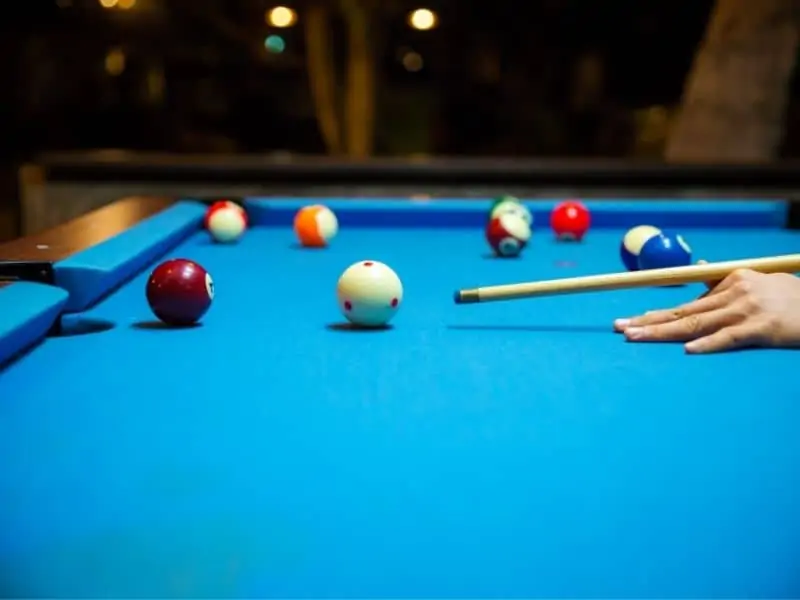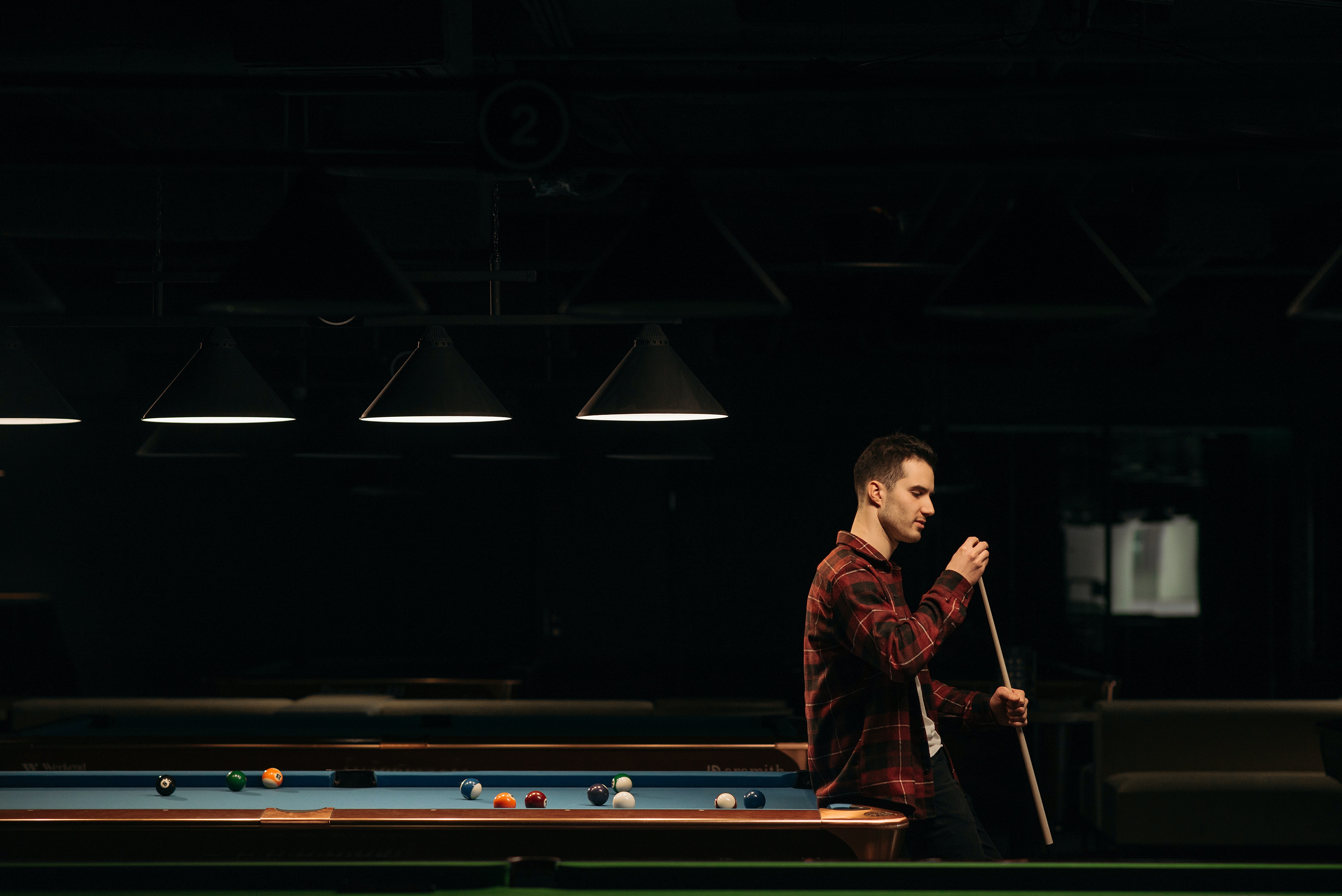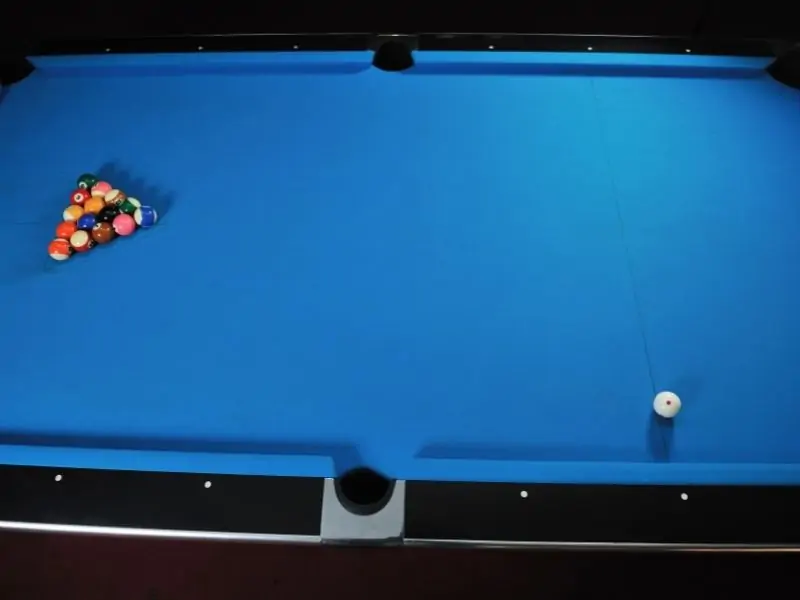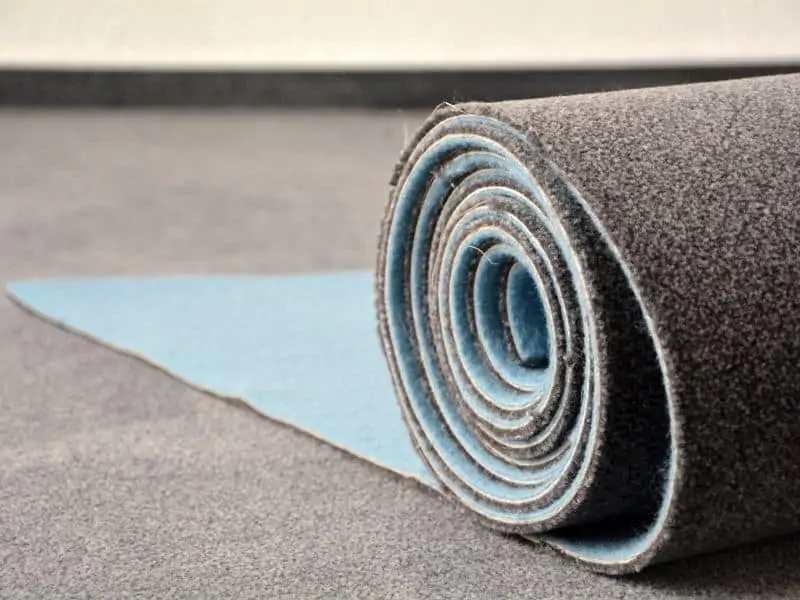Although ivory cue balls are rare, it’s entirely possible to run into them. There are bound to be ivory cue ball collections sitting in storage or passed down from generation to generation. Unfortunately, ivory cue balls aren’t often labeled as such. If you don’t know what to look for, it can be hard to tell the difference between clay, ivory, and old acrylic balls. Luckily there are a few easy ways to differentiate between these materials. Read on to learn how to tell if a cue ball is ivory.
To tell if a cue ball is ivory, you can use a blacklight, look for telltale signs with your eye or a magnifying glass, try the pin test, or ask an expert. I’ll also discuss how much ivory cue balls are worth and whether or not they are better than modern balls.
Best Ways to Tell if a Cue Ball is Ivory
As you probably know, ivory comes from tusks— namely those of African and Indian elephants. Many people don’t realize that ivory can also be sourced from other animals, such as narwhals, hippos, sperm whales, walruses, and some kinds of warthogs.
Ivory became recognized as an ideal material for billiard balls in the 17th century. It was used all the way up until the 20th century, despite the threat it posed to elephants. Those other animals didn’t have sufficient amounts of ivory— or the ivory wasn’t large enough— to ever become commercially viable. The ivory from elephant tusks was generally big enough to make billiard balls.
Since ivory is an organic substance, it can be easy to inspect a cue ball visually to determine if it’s ivory or not.
Look For Telltale Signs
There are a few characteristics that are unique to ivory cue balls. So, it may be possible for you to identify an ivory cue ball simply by looking at it. Here are the telltale signs to look for:
Color Ivory cue balls discolor over time. They often turn to a dark yellow or brown. This should be easily distinguishable from a sun-faded or old synthetic cue ball.
Dark Lines Ivory cue balls will have uneven and seemingly random crosshatch lines throughout. They shouldn’t have a repeating pattern and no two pieces of ivory will have the exact same line structure. It’s also possible to use Schreger Lines to identify ivory, but they may not always be present on the ball, depending on how it was cut from the tusk. The angle of the Schreger Lines can tell you about the source of the ivory. Lines at 115-degrees or more mean elephant. Lines at 90-degrees or less mean mammoth.
Uneven Color Unlike synthetic balls, ivory cue balls tend to discolor unevenly. Turning a ball in your hand while paying attention to the coloring can give you a good idea of the material.
Misshapen Since most ivory cue balls have been around for a long time, they often show signs of wear. These can be as apparent as cracking or as subtle as a slightly misshapen sphere.
Engraved Numbers Some ivory cue balls will have numbers engraved in them somewhere on the surface. Sometimes these numbers are worn and hard to read. Still, if you see numbers on the ball, there’s a good chance it’s ivory.
Use a Blacklight
Remember that great combination of those fuzzy psychedelic posters and black lights? Or was that just me? Even if that wasn’t your thing, chances are you know someone with a blacklight that you can use to help you determine if a cue ball is ivory. However, this is not the ultimate test. It’s best to combine this with other characteristics before you decide for sure. Here’s how the cue ball test works:
- In a dark room, power up the blacklight and shine it on the cue ball.
- Ivory cue balls will most often give off a white sheen, whereas synthetic materials will have a blue or light blue glow. It’s also possible that, if the ball has a patina, it will glow dull brown or yellow. Bright yellow indicates artificial aging, meaning it’s probably not ivory.
Use Heat
I don’t recommend this method, as it can damage the ball if it’s not ivory, and leave a mark on the ball if it is. Either way, you’ve marred the ball at the end of it. Still, I would be remiss if I didn’t mention this test.
- Using pliers or some other method to protect your fingers, hold a pin (like a sewing needle) and heat it up with a candle or a lighter for several seconds.
- Using a reasonable amount of force, place the heated tip of the pin on the cue ball in question.
- If the ball melts where you placed the pin, or smells like burning plastic, it’s not ivory.
- If the ball doesn’t melt and smells like burning hair, it is ivory.
Ask an Expert
The last method, and perhaps the easiest, is to ask an expert. Chances are there’s someone at an antique store or a pawn shop that can tell you for sure. They may even be able to give you an idea of how much the ball is worth if it is ivory. Just make sure the person is legitimate and trustworthy. If you’re not sure, get a second opinion.
Fascinating Ivory Cue Ball Factoids
Historical Shift: Before the widespread use of ivory, billiard balls were often made from wood or clay. The switch to ivory marked a considerable upgrade in the game’s quality, making it more popular and refined.
Tusk to Ball Ratio: It’s estimated that a single elephant tusk could yield only four to eight billiard balls. Considering the size and weight of an entire tusk, this reflects the immense waste and the ecological cost of the ivory trade for the game.
Explosive Alternatives: The quest for an alternative to ivory led to some interesting experiments. One of the early synthetic substitutes was called ‘Celluloid.’ However, it had a significant flaw: it was flammable and could explode upon impact!
Inspiring Innovation: The dire need for a sustainable alternative to ivory in the late 19th century led to a major competition. John Wesley Hyatt, trying to win a $10,000 prize for an ivory substitute, ended up developing the first industrial plastic, even though it wasn’t an immediate solution for billiard balls.
Changing Game Dynamics: Ivory balls, being organic, can absorb moisture. This means they could play differently in humid environments compared to dry ones. Modern synthetic balls don’t have this issue, making the game more consistent across various locations.
Artistic Expression: In some cultures, ivory cue balls have been intricately carved and decorated, turning them into pieces of art. These artistic cue balls often tell tales of myths, legends, and historical events.
Cue Ball Cues?: Interestingly, the demand for ivory wasn’t limited to just cue balls. At one point, even the cues (sticks) had ivory tips, which players believed could provide a better hit.
A Mammoth Discovery: Some cue balls, believed to be ivory, have later been found to be made from mammoth tusks. These ancient tusks, preserved in ice, have sometimes been used as an exotic alternative to elephant ivory.
Sound Difference: Billiard enthusiasts claim that ivory cue balls produce a distinct, crisp sound compared to their synthetic counterparts. This unique sound can sometimes be used to identify them during play.
Niche Markets: Despite the controversies, there still exists a niche market of collectors who seek out antique ivory billiard sets. However, ethical considerations and legal restrictions have made such collections rarer and, in some places, illicit.
Are Ivory Pool Balls Better?
There’s no question that ivory pool balls were much better than wooden or clay balls before the modern era. However, the synthetic pool balls that we have today are marvels of engineering and design.
The best balls, like these from Aramith, are the best balls in the world of pool. Not only are they more uniform in size, weight, and shape, but no elephants had to die in order to make them!
Related Article: Are Aramith Pool Balls Worth the Money?
How Much Is an Ivory Cue Ball Worth?
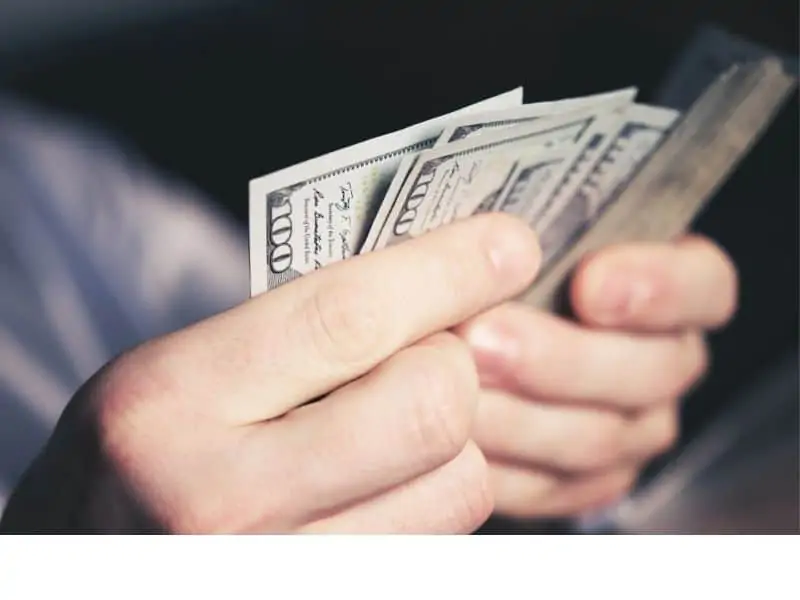
The range of value for an ivory cue ball varies depending on several factors. The more pristine the cue ball, the more it will generally be worth. And if you can prove that it’s from a certain manufacturer, it will probably sell for much more.
Ivory cue balls generally start at $100 and can be worth as much as $1000 or more. Entire sets of ivory billiard balls sell for as much as $5000. It’s impossible to tell how much your cue ball is worth without consulting an expert. If you know the manufacturer, you may be able to get an estimate online.
Even if you have an ivory cue ball that’s not worth much, it’s still a piece of billiard history and a great conversation starter!
Ethical Considerations of Owning Ivory Cue Balls
While the historical and monetary value of ivory cue balls is undeniable, it’s essential to discuss the ethical considerations associated with owning and trading such items. The demand for ivory, primarily from elephant tusks, has led to severe consequences for elephant populations and biodiversity.
The Impact on Elephants
Poaching has decimated elephant populations for centuries, largely due to the demand for ivory. African elephants, for instance, saw their numbers drop from millions in the early 20th century to a few hundred thousand by the end of the century. The story is similar for Asian elephants.
Legal Implications
Many countries have implemented bans on the sale and ownership of ivory. While some regulations allow for the sale of antique ivory (usually items made before a certain date), others have stricter rules. Therefore, before selling, buying, or even owning an ivory cue ball, it’s crucial to be aware of the regulations in your jurisdiction. The penalties for non-compliance can be significant.
Environmental Awareness
Given the challenges elephants face, such as habitat loss and climate change, the added pressure of poaching for their tusks can be catastrophic. By being aware of the history and impact of the ivory trade, one can make informed decisions about owning or trading in such items.
Alternatives and the Way Forward
For those who appreciate the aesthetic and historic value of ivory cue balls, consider looking into alternatives that don’t have the same ethical implications. Several materials today mimic the look and feel of ivory without the associated environmental and ethical concerns.
If you own ivory items, consider donating them to museums or educational institutions where they can be used to educate others about the history and consequences of the ivory trade.
While the allure of ivory cue balls is understandable from a historical and aesthetic perspective, it’s crucial to be informed and make ethical decisions regarding ownership, trade, and display. The stakes, in terms of environmental conservation and the preservation of some of the world’s most majestic creatures, are high.
Other Articles You May Be Interested In
- Why Do Pool Balls Turn Yellow?
- Do Billiard Balls Wear Out? What You Need to Know
- What Are Pool Balls Made Of?
- Why Are Pool Cues Made of Maple?
- What is English in Pool? A Simple Explanation




